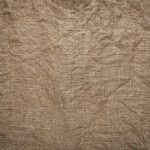You’ll find jute fabric offers great environmental benefits since it’s biodegradable, renewable, and eco-friendly. It’s strong and durable, perfect for bags or rugs, and brings a rustic, natural look to your space. Plus, it’s breathable and comfortable in warm weather. However, jute struggles with moisture, is hard to clean, and can feel coarse against skin. If you want to understand how to make the most of jute’s strengths and work around its limits, keep exploring.
Table of Contents
Key Takeaways
- Jute fabric is eco-friendly, biodegradable, and supports sustainable agriculture with a low environmental footprint.
- It offers high durability and strength, ideal for heavy-use products like bags and upholstery.
- The coarse texture provides a natural, rustic aesthetic but may limit softness and comfort for clothing.
- Jute fabric is breathable and comfortable in warm climates but can degrade with prolonged moisture exposure.
- Cleaning jute requires care; it dries slowly, is prone to mildew, and needs gentle maintenance to preserve quality.
Environmental Benefits of Jute Fabric
Although you mightn’t realize it, choosing jute fabric can greatly reduce your environmental footprint. Jute is a natural fiber that grows quickly and requires minimal pesticides or fertilizers, making it an eco-friendly crop.
When you opt for jute, you’re supporting a renewable resource that absorbs carbon dioxide and releases oxygen, improving air quality. Unlike synthetic fabrics, jute is biodegradable, so it won’t linger in landfills for decades.
Plus, its cultivation enriches the soil and helps prevent erosion. By selecting jute products, you’re contributing to sustainable farming practices and reducing plastic waste.
Durability and Strength of Jute Material
Beyond its environmental advantages, jute fabric stands out for its impressive durability and strength.
When you choose jute, you get a material that can handle heavy loads without tearing easily, making it ideal for bags, rugs, and upholstery. Its natural fibers are coarse yet resilient, giving it a robust structure that withstands daily wear and tear.
However, keep in mind that jute isn’t as strong when wet, so prolonged exposure to moisture can weaken the fibers. You’ll want to avoid using jute in consistently damp environments to maintain its integrity.
Aesthetic Appeal and Texture of Jute
You’ll appreciate jute’s natural rustic look that adds charm to any space.
Its texture is coarse yet comfortable, giving you a unique tactile experience.
Plus, jute offers versatile design options that fit both casual and elegant styles.
Natural Rustic Look
Jute fabric offers a unique, natural rustic look that instantly adds warmth and character to any space.
When you use jute, you bring in an earthy, organic vibe that complements both modern and traditional decor. Its uneven texture and natural color variations create a charming, handcrafted feel you won’t find in synthetic materials.
You’ll notice how jute’s coarse fibers give a subtle depth, making your items stand out without overwhelming the room. This fabric’s raw, unrefined appearance pairs beautifully with wood, stone, and other natural elements, enhancing an eco-friendly aesthetic.
If you want to introduce a touch of nature and authenticity into your home or products, jute’s rustic look offers an appealing, timeless solution that blends style with simplicity.
Coarse Yet Comfortable
The natural rustic look of jute sets the stage for appreciating its unique texture, which balances coarseness with surprising comfort.
When you touch jute fabric, you might notice its slightly rough surface, but don’t let that fool you. That coarse feel actually adds character and durability, making it ideal for everyday use.
Despite its roughness, jute doesn’t irritate your skin as much as you might expect; it breathes well and feels surprisingly light.
You’ll find this texture gives off an earthy, authentic vibe that’s hard to replicate with synthetic fabrics.
Versatile Design Options
Although it may seem limited at first, jute fabric offers a wide range of design possibilities that can suit various styles and settings.
You can find jute woven into different patterns, from simple plain weaves to intricate braids, giving you plenty of options for texture and visual interest. Its natural earthy tones blend well with rustic, bohemian, or even modern decor, allowing you to customize your space easily.
Plus, jute’s coarse texture adds a tactile element that enhances the aesthetic without overwhelming other design elements.
Whether you use it for rugs, upholstery, or wall hangings, jute fabric adapts well and brings warmth and character.
You’ll appreciate how versatile and stylish jute can be, making it a smart choice for diverse design projects.
Comfort and Breathability of Jute Fabric
When you wear or use jute fabric, you’ll quickly notice how its natural fibers allow air to circulate, keeping you cool and comfortable. This breathability makes jute ideal for warm climates or casual wear. Its coarse texture might feel rough initially, but with use, it softens, enhancing comfort. Jute’s open weave encourages moisture evaporation, helping you stay dry without overheating.
| Feature | Description | Benefit |
|---|---|---|
| Natural fibers | Plant-based, eco-friendly | Promotes airflow |
| Open weave | Loosely woven structure | Enhances breathability |
| Texture | Coarse but softens over time | Improves comfort |
| Moisture handling | Allows evaporation | Keeps you dry |
| Temperature regulation | Maintains coolness | Ideal for warm weather |
Limitations in Moisture Absorption and Maintenance
You’ll notice jute fabric struggles with moisture retention, which can affect its durability and feel.
It’s not the easiest to clean, so you’ll need to handle it carefully to avoid damage.
Let’s look at what this means for maintenance and everyday use.
Moisture Retention Challenges
Because jute fabric naturally struggles to absorb and retain moisture, you might find it challenging to keep it fresh and dry.
Its coarse fibers don’t trap water well, which means moisture can easily accumulate on the surface, leading to dampness. This can create a breeding ground for mildew and unpleasant odors if the fabric isn’t aired out promptly.
You’ll notice that jute dries slowly compared to synthetic fabrics, so in humid conditions, it can stay damp longer than you’d like. This limitation affects its usability in environments prone to moisture or spills.
Care and Cleaning Issues
Although jute’s natural fibers provide durability, they also make cleaning and maintenance tricky since the fabric doesn’t absorb moisture well. When you clean jute, avoid soaking it; excess water can cause stiffness and mildew. Dry cleaning or spot cleaning with a damp cloth works best. Also, jute fibers tend to shed, so regular gentle vacuuming helps maintain its appearance. If you want to keep your jute fabric looking fresh, protect it from prolonged exposure to moisture and direct sunlight.
| Issue | Recommended Care |
|---|---|
| Moisture Sensitivity | Avoid soaking; spot clean only |
| Fiber Shedding | Vacuum gently and regularly |
| Stiffness & Mildew | Dry thoroughly and store dry |
Following these tips helps you extend jute’s lifespan and keeps it looking its best.
Cost and Economic Impact of Jute Production
The cost and economic impact of jute production play an essential role in shaping both local economies and global markets. When you consider jute, you’ll find it’s an affordable raw material, especially compared to synthetic fibers. This affordability benefits farmers and manufacturers by keeping production costs low.
Furthermore, jute cultivation supports millions of small-scale farmers, boosting rural employment and reducing poverty in key producing countries like India and Bangladesh. However, you should also note that jute prices can fluctuate due to weather conditions and market demand, which might affect your supply chain stability.
Despite some challenges, investing in jute production can contribute positively to sustainable economic growth, while offering you a cost-effective, eco-friendly fabric option.
Applications and Suitability of Jute in Various Industries
When you explore the versatility of jute, you’ll find it suits a wide range of industries due to its strength, biodegradability, and affordability.
In packaging, jute is perfect for bags and sacks, offering a sustainable alternative to plastic.
You’ll also see jute in home décor, from rugs to curtains, where its natural texture adds rustic charm.
The agriculture sector uses jute for erosion control mats and plant ties, benefiting from its eco-friendly nature.
Even the fashion industry incorporates jute in accessories and eco-friendly footwear.
However, jute’s coarse texture limits its use in high-end clothing.
Frequently Asked Questions
How Is Jute Fabric Dyed Without Harming the Environment?
You can dye jute fabric using natural dyes from plants, avoiding harmful chemicals. You’ll want to use low-water processes and eco-friendly mordants, ensuring the environment stays safe while achieving vibrant, sustainable colors on your jute fabric.
Can Jute Fabric Be Blended With Synthetic Fibers?
You might be surprised, but yes, you can blend jute with synthetic fibers. This mix boosts strength and durability, yet it slightly reduces jute’s natural breathability. You’ll enjoy a fabric that’s both sturdy and versatile.
What Are the Best Storage Practices for Jute Products?
You should store jute products in a cool, dry place away from direct sunlight to prevent mold and fading. Keep them in breathable bags or containers to allow air circulation and avoid moisture buildup, preserving their quality.
How Does Jute Fabric React to Different Washing Methods?
You should avoid machine washing jute fabric since it can weaken fibers and cause shrinkage. Instead, hand wash it gently with cold water and mild detergent to maintain its texture and durability over time.
Are There Any Health Concerns Related to Jute Fiber Allergies?
Imagine tiny needles brushing your skin—jute fibers can cause irritation or allergic reactions. If you’re sensitive, you might experience redness or itching, so it’s best to test a small patch before using jute fabric extensively.
- Comparing Acidic and Basic Dyes in Laboratory Staining - July 13, 2025
- Cervical Myelogram: Explaining the Dye Injection Technique - July 13, 2025
- The Role of Dyes in Biological Staining Techniques - July 13, 2025







